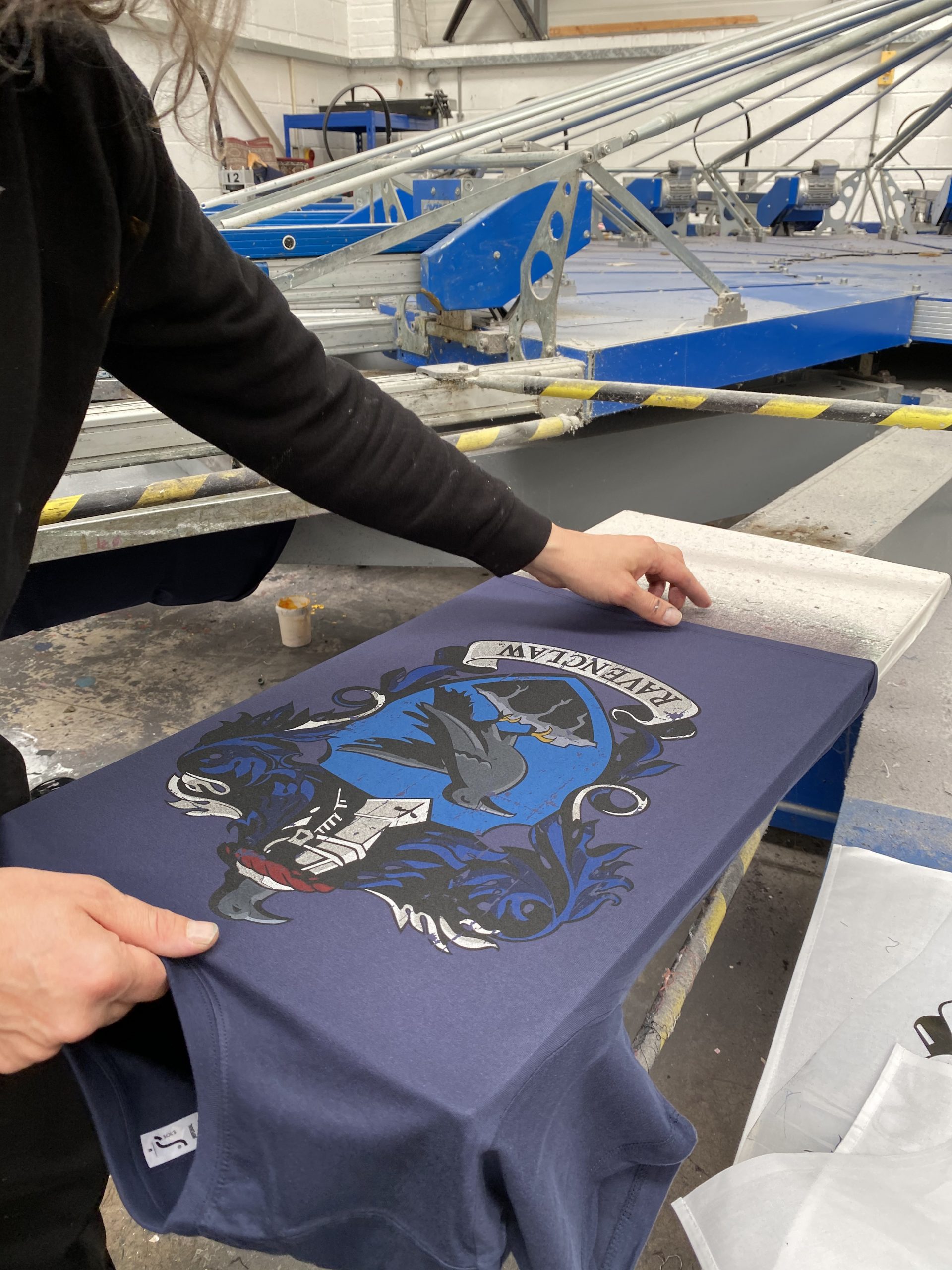ChatGPT said: How 10:9 Design Abilene is empowering creators
The Crucial Guide to Comprehending Screen Printing and Its Versatile Utilizes
Screen printing has an abundant background that goes back to old times, evolving into an advanced strategy utilized across numerous sectors today. This overview discovers the intricacies of the screen printing process, describing its applications in advertising and marketing, home, and style design - 10:9 Design Abilene. Comprehending these principles can open imaginative possibility for both commercial and imaginative tasks. The following sections will certainly expose crucial suggestions and strategies to enhance one's screen printing endeavors
The History of Screen Printing
Screen printing has roots that map back centuries, its development reflects the technical and imaginative developments of numerous cultures. Coming from ancient China, the method was initially utilized for decorating fabrics and later infect Japan, where it became integral to Ukiyo-e woodblock printing. The technique changed to Europe in the 18th century, where it acquired popularity among artisans and commercial printers. The innovation of image solution in the 20th century reinvented screen printing, enabling more complex layouts and better performance. Musicians like Andy Warhol even more drove its popularity, making use of the tool to create legendary jobs that combined commercialism and fine art. By the late 20th century, screen printing had actually developed itself as a flexible technique, utilized in fashion, advertising, and fine art. Today, it proceeds to develop, incorporating electronic innovation and expanding its applications throughout various sectors.
The Screen Printing Process Explained
Screen printing transforms artistic visions into concrete styles with a collection of exact steps. Initially, a picture is developed and after that moved onto a screen, normally constructed from great mesh fabric stretched over a framework. A light-sensitive emulsion is applied to the screen, which is exposed to light, solidifying in areas not covered by the picture. After cleaning out the unhardened solution, a pattern is developed.
Next off, the screen is positioned over the substratum, whether it be material, paper, or an additional product. Ink is after that pressed through the open locations of the pattern making use of a squeegee, transferring the design onto the substrate below. This process can be duplicated for multiple colors, needing different screens for every tone. Ultimately, the printed product is healed using heat to guarantee the ink sticks correctly, causing a resilient, lively style ready for use.
Kinds Of Screen Printing Techniques

Additionally, specialized techniques, such as discharge screen printing, get rid of color from the fabric to develop softer prints, while foil screen printing applies metal foil to attain a glossy surface (10:9 Design Texas). Each method uses distinctive features, satisfying numerous imaginative demands and production scales, ultimately broadening the opportunities within the screen printing domain name
Applications of Screen Printing in Numerous Industries

Additionally, the signage and advertising and marketing industries use screen printing for producing distinctive displays and banners. This approach enables strong shades and detailed layouts that capture attention. In electronics, screen printing is utilized for using conductive inks to circuit boards, vital for part links. The home décor industry accepts screen printing to generate distinct designs on textiles and wall art. Overall, screen printing works as a crucial tool throughout diverse fields, boosting products with customized and aesthetically appealing graphics.
Tips for Effective Screen Printing Projects
While undertaking a screen printing project, mindful focus to detail can significantly boost the last result. First, choosing high-grade products is crucial; this consists of the screen, inks, and substrates. Making use of proper mesh counts can influence ink deposition and detail resolution. Preparation is just as essential; you could try this out thorough cleansing of displays and why not try these out appropriate exposure times ensure crisp prints.
Next, accurate enrollment is critical for multi-color prints. Using alignment tools can aid attain specific layering. Furthermore, screening prints on scrap products prior to manufacturing aids identify possible concerns without losing resources.

Often Asked Questions
What Materials Are Ideal for Screen Printing on Textile?
Cotton and polyester blends are perfect for screen printing on textile due to their sturdiness and ink absorption. Additionally, specialty materials like silk or canvas can generate distinct appearances and finishes, enhancing the overall layout top quality.
Exactly how Do I Tidy and Maintain Screen Printing Equipment?
To clean and maintain screen printing tools, one should consistently wash screens with ideal solvents, check mops for wear, oil moving parts, and shop all items in a completely dry, dust-free setting to extend their life-span.
What Are the Environmental Effects of Screen Printing?
Screen printing can have considerable ecological effects, including chemical waste from inks and solvents, water usage during cleansing procedures, and energy usage. Green products and sustainable techniques are important for reducing these unfavorable results.
Can Screen Printing Be Done in your home Successfully?
Screen printing can be effectively done at home with the ideal materials and techniques. Hobbyists can create high quality prints, though success depends upon their ability level, equipment, and understanding of the procedure entailed.
What Are the Costs Related To Starting a Screen Printing Business?

Starting a screen printing service includes expenses for devices, products, and office. Initial costs normally vary from a few hundred to several thousand dollars, relying on the scale, quality of machinery, and wanted manufacturing ability.
Screen printing has an abundant history that dates back to old times, evolving right into an advanced technique used special info across various markets today. Another technique, rotary screen printing, employs cylindrical screens, promoting continual printing on textile rolls, thus boosting efficiency for large-scale manufacturings. Furthermore, specialized strategies, such as discharge screen printing, remove dye from the fabric to create softer prints, while aluminum foil screen printing applies metallic aluminum foil to achieve a shiny coating. In the fashion sector, screen printing is widely utilized to develop vibrant styles on clothing, allowing brand names to display their special designs. Cotton and polyester blends are suitable for screen printing on textile due to their longevity and ink absorption.